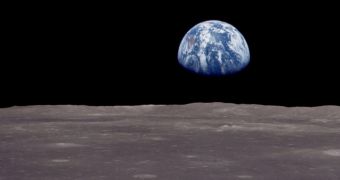There's not much certainty provided by the facts theorized about the Earth's early years. Actually, the first five hundred millennia hold so little record of activity that the respective time frame is referred to as the Earth's dark ages. This major shortage of solid proof left many questions unanswered, such as those linked to the planetary magnetic field formation period, to the Earth-Moon relationship changes and to the emergence of oxygen (and thereby – that of life). But a new proposition may help change that.
Recently, a group of scientists including Minoru Ozima and Yayoi N. Miura from the University of Tokyo in Japan, Qing-Zhu Yin from the University of California, as well as Frank Podosek from the Washington University in St. Louis, Missouri, thought of a way to shed more light on these matters, based on facts already tested, but independently from similar previous studies.
“I speculate that heavy bombardment by meteorite showers at around 4 billion years ago – which is well-recorded on the lunar surface as numerous craters and is known as lunar cataclysm – may also have almost totally erased surface records on the Earth,” explained Ozima for PhysOrg. So, the team believes that evidence of the Earth's early times must be present on the Moon, in the light of previous research.
It has already been found that, given the low (or the lack of an) early magnetic field, light compounds of the Earth's atmosphere could have been carried in space via the solar wind and could have even made it to the Moon, which was also demonstrated to have been drifting away from our planet in time. Now, our natural satellite is presumed to be twice as far than it originally was. Since there's a probability that the Moon contains preserved samples of the Earth's dark ages, the experts say we should look for them.
But that's a task requiring international involvement, given its scale and the efforts needed. “Firstly, we need to collect hundreds of thousands of lunar ilmenite grains from lunar soils, not only from the near side, but also from the far side,” shared Ozima. “And then we need tens of thousands of isotopic analyses of high precision of lunar ilmenite grains. Even a well-equipped and stuffed contemporary laboratory would be capable of a few hundred analyses at most.”

 14 DAY TRIAL //
14 DAY TRIAL //